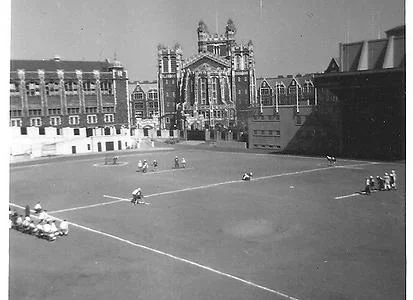City College, along with Stevens Tech of New Jersey and Johns Hopkins of Baltimore, began playing organized lacrosse in the late 1880's. The first team City fielded, in 1888, included a tall player named Bernard Baruch, nicknamed Shorty, who struggled with the game and eventually gave it up. An inscription in the school's College Journal of May 23, 1889, issued a comforting message to Baruch: ''Never mind, Shorty, if you aren't a success at lacrosse. You are at everything else. '' Baruch went on to become a millionaire who advised seven Presidents, including Woodrow Wilson, Franklin D. Roosevelt and Dwight D. Eisenhower. In 1897,
City played its home games in the North Meadows section of Central Park and won the North American championship. Six years later, it captured the national collegiate championship with a team that had 40 players try out. City maintained a competitive team through the early 1900's, but it wasn't until the arrival of Leon A. (Chief) Miller in 1931 as coach that the Beavers returned to national respectability. Miller, a Cherokee from the Smoky Mountains of North Carolina, was an all-America lacrosse and football player at the Carlisle (Pa.) Indian School, where he was a teammate of Jim Thorpe.
Miller's teams at City played the best competition, including Johns Hopkins, Army and Harvard. In 1959, Miller, who grew up with the game his people called baggataway, was forced to retire because of illness. He is the only person associated with City lacrosse in the Hall of Fame in Baltimore. ''The Chief made us all feel very special,'' said George Baron, who played goalie in the 1940's and is the only first-team all-American in City history. ''He took kids with no lacrosse experience and made them competitive.'' (NY Times)

